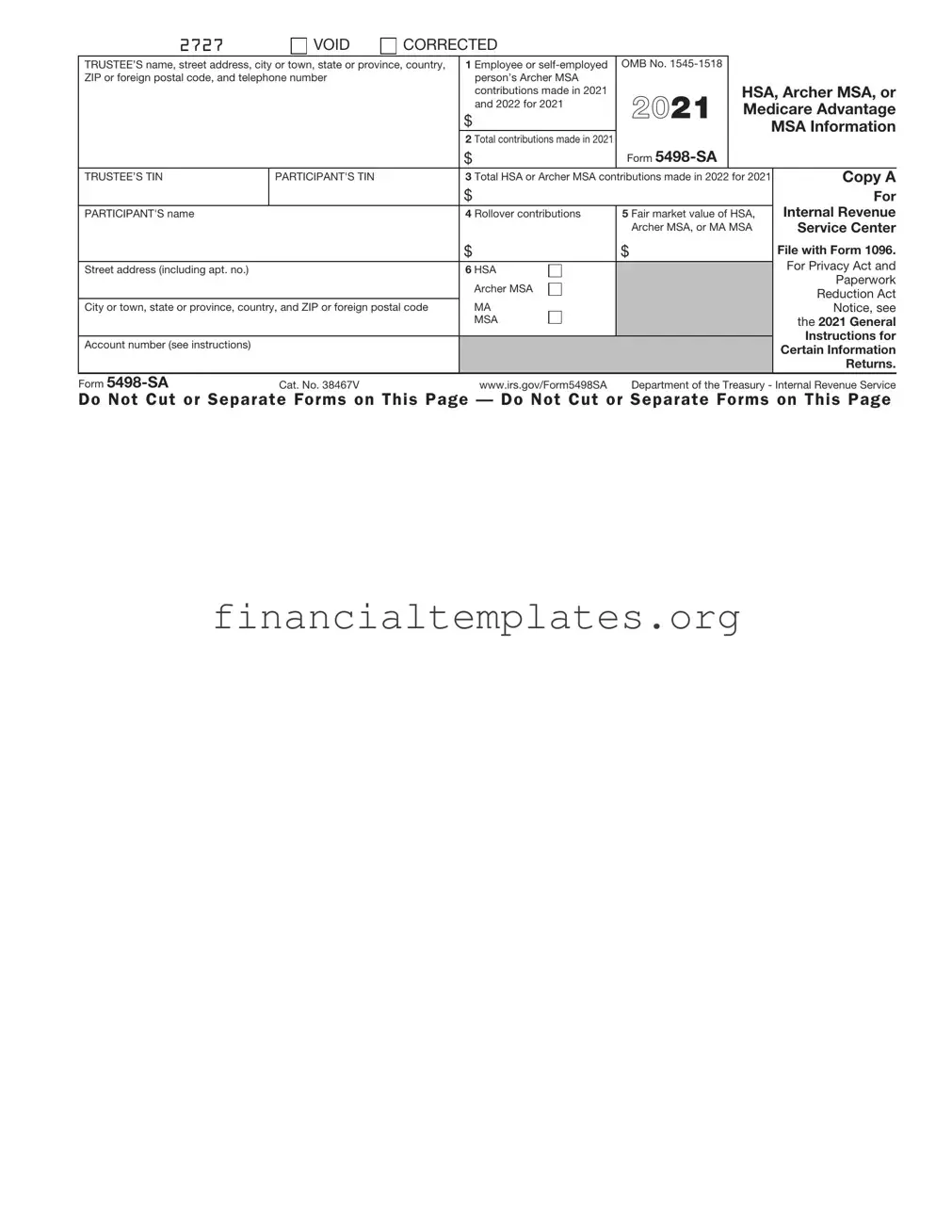The IRS 5498-SA form, closely associated with reporting contributions to Health Savings Accounts (HSAs), Archer Medical Savings Accounts (Archer MSAs), and Medicare Advantage MSAs, shares similarities with a host of other IRS documents. These forms collectively play pivotal roles in how individuals and entities report various types of contributions, distributions, and other financial activities to the Internal Revenue Service (IRS).
One such document is the IRS Form 1099-SA, which reports distributions from HSAs, Archer MSAs, or Medicare Advantage MSAs. Just like the 5498-SA form records contributions made to these accounts, the 1099-SA details withdrawals, highlighting their complementary roles in tax reporting for health savings and medical savings accounts.
Another related form is the IRS Form 5498, which serves a similar purpose to the 5498-SA but for Individual Retirement Accounts (IRAs). This form reports contributions to traditional and Roth IRAs, SEP IRAs, and SIMPLE IRAs, thus providing the IRS with information about retirement savings in a manner akin to how the 5498-SA reports on health-related savings.
The IRS Form 1099-R also bears similarity, reporting distributions from pensions, annuities, retirement or profit-sharing plans, IRAs, and insurance contracts. While it focuses on distributions rather than contributions, it complements the information provided by forms like the 5498 and 5498-SA, offering a full picture of an individual’s retirement and health savings transactions for the tax year.
IRS Form 8889 is closely related to the 5498-SA as it is used to report HSA contributions and distributions on the taxpayer's individual income tax return. This form directly utilizes the information reported on the 5498-SA and the 1099-SA to calculate deductions and taxable income related to HSAs.
The IRS Form 5329, which addresses additional taxes on IRAs and other tax-favored accounts, also links back to the 5498-SA. Since Form 5329 covers penalties for excess contributions and distributions across a wide array of accounts, including those reported on the 5498-SA, it's essential for ensuring taxpayers comply with contribution limits and withdrawal rules.
The IRS Form 8606 is used by individuals to report non-deductible contributions to traditional IRAs and distributions from IRAs, aiming to track the after-tax portion of their contributions. Although it focuses on IRAs rather than HSAs or MSAs, it shares the objective of the 5498-SA: to ensure proper tax treatment of contributions to tax-advantaged accounts.
Similarly, the IRS Form 1040, the standard federal income tax return for individuals, connects to the 5498-SA through various lines where individuals report deductions, taxable income, and tax credits associated with their HSAs, Archer MSAs, and Medicare Advantage MSAs, using information from forms like the 5498-SA and 1099-SA.
Last but not least, the IRS Form W-2, Wage and Tax Statement, has a connection to forms like the 5498-SA. Box 12 of Form W-2 can contain codes that report employer contributions to an employee's HSA, which complements the information reported on the 5498-SA by showing contributions made through payroll deduction.
Each of these documents plays a specific role in the broader tapestry of tax reporting and compliance, with the 5498-SA form being an essential piece for those with HSAs, Archer MSAs, or Medicare Advantage MSAs. Understanding how these forms interrelate helps taxpayers ensure accurate and complete reporting of their health savings and retirement contributions.




 CORRECTED (if checked)
CORRECTED (if checked)